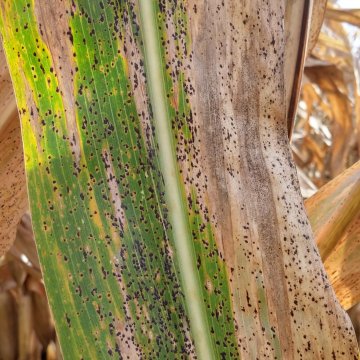Explore our blog featuring articles about farming and irrigation tips and tricks!
Tar Spot Disease In Corn Takes To The Midwest

By: Megan Vollstedt
If you noticed what looks like spots of tar on your corn leaves last year, you weren’t alone. Known as tar spot, the fungus has continued to infiltrate the Midwest since it was first identified in the U.S. in 2015. As wet, moderate weather persists this spring, farmers should be on the lookout for this relatively new disease.
TIMELINE AND PROGRESSION
Agronomists currently believe that tar spot blew up from Mexico on a storm system and was first identified in a limited capacity in fields of Illinois and Indiana in 2015. Throughout 2016 and 2017, it slowly moved out from that epicenter to the Great Lakes region, into parts of Michigan, southern Wisconsin, Ohio, eastern Iowa, and even Florida.
Agronomists at first couldn’t predict if tar spot would overwinter in the Midwest. But after witnessing the spread over the last few years, it’s clear the disease remains in the soil and residue. Like many fungal diseases that produce spores, tar spot is carried by wind, and can easily spread 100-plus meters from field to field.
In 2018, we saw the most fields infected plus the biggest yield losses to date – around 30 to 40 bushels per acre in some fields.
TAR SPOT CHARACTERISTICS
Tar spot symptoms manifest as small, raised, irregular-shape black lesions scattered across the leaf surface. It spreads from the lowest leaves to the upper leaves, leaf sheaths, and eventually the husks of developing ears.
Stay up to date on all T-L news and get alerts on special pricing!


